Hidden Pantry House Plans: A Comprehensive Guide
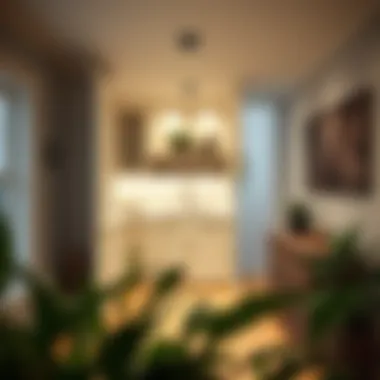
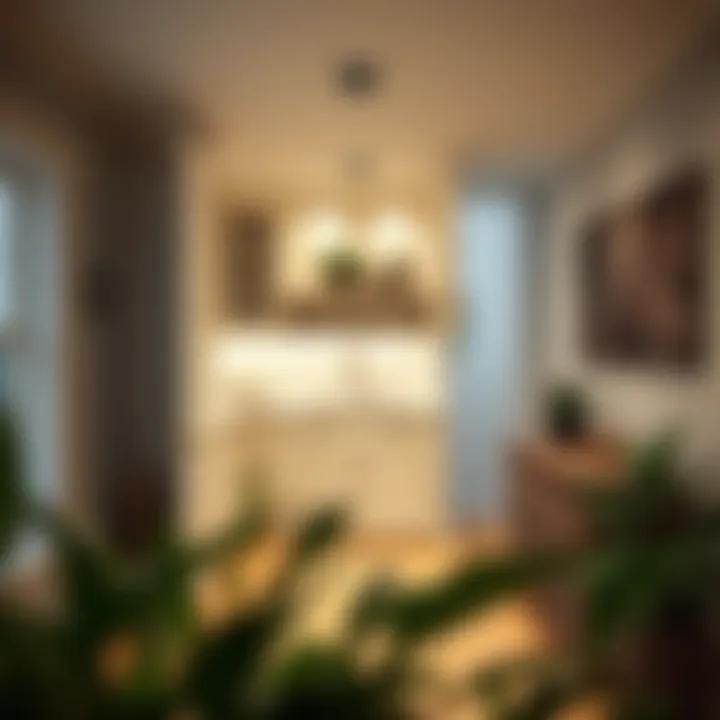
Intro
In the realm of modern home design, hidden pantries have emerged as a captivating feature for homeowners seeking both practicality and style. These secretive spaces combine the functionality of traditional storage with a touch of flair, allowing for efficient organization without intruding into the overall aesthetic of the home. Imagine reaching for ingredients without a cluttered countertop or the need to rummage through awkwardly placed cabinets. This guide offers a thorough exploration of how to seamlessly incorporate hidden pantries into various house plans.
As we dive into the details, expect to explore trending designs that are both contemporary and innovative. The theme of hidden pantries speaks to a growing desire for homes that not only accommodate our culinary adventures but also enhance the visual appeal of our environment. With a judicious blend of utility and sophisticated design, hidden pantries are gaining popularity among not just chefs and home bakers, but also interior design enthusiasts and practical homeowners alike.
Let’s take a closer look at inspirational designs and the myriad ways hidden pantries can blend into your living space.
Preface to Hidden Pantries
In the realm of home design, hidden pantries emerge as both a utilitarian asset and a clever design element, resonating well with those who value both organization and aesthetics. These defined spaces serve as a sanctuary for kitchen essentials, allowing homeowners to optimize their environments while ensuring ease of access to various supplies. The blooming trend of integrating hidden pantries into everyday living spaces is worth exploring for anyone considering ways to enhance function and flow in their culinary areas.
Defining Hidden Pantries
Hidden pantries can be envisioned as miniature retreats tucked away behind cabinetry or concealed behind clever doors and walls. Unlike traditional pantries that take center stage in a kitchen, these sly spaces often operate discreetly, camouflaging essential food items and kitchen tools from public view. Their design can vary quite a bit—some opting for sliding doors, while others may use a simple push mechanism that transforms a plain-looking wall into a door. The key attribute is their intention to keep the kitchen visually tidy, allowing a seamless flow while providing the functionality of a full pantry.
The advantages stretch beyond mere aesthetics. For instance, they not only maximize the usable space but also promote efficient organization. Think about it: no more hunting for that elusive can of beans buried behind the spaghetti! A hidden pantry can streamline meal prep and make shopping easier by fostering good inventory practices.
The Evolution of Pantry Design
The concept of the pantry has gone through significant metamorphoses over the decades. Gone are the days of simply tucking supplies into an oversized cupboard in the corner. Modern design takes a holistic approach, blending old-world charm with contemporary sensibilities.
Historically, pantries were attached to the kitchen, stocked chiefly for storing preserved foods, yet their function expanded as kitchens transitioned into multi-purpose living areas. Initially designed for practicality, contemporary versions embrace visually appealing aesthetics while focusing on smart layouts. .
Hidden pantries now boast ingenious features like adjustable shelving, and some even incorporate temperature controls to maintain optimal conditions for various food items. They take advantage of vertical space, aligning jars and containers for quick grabs, all while maintaining an uncluttered look.
Ultimately, the secret allure of hidden pantries lies in their duality—offering functionality and aesthetic integrity. As we explore the many facets of hidden pantry design in this article, we will uncover their growing prominence in modern homes and what makes them indispensable for a balanced living space.
Functionality of Hidden Pantries
Hidden pantries have become a stylish solution for modern homes, enhancing both the utility and charm of kitchens. These spaces aren’t just for storage; they’re a blend of functionality and design, created to streamline daily tasks while keeping the visual appeal intact. Their importance can’t be understated, often acting as the heart of a kitchen where culinary ideas take shape amidst well-preserved ingredients and organized tools.
Space Optimization
Maximizing Kitchen Efficiency
Maximizing kitchen efficiency through hidden pantries is like having a secret weapon up your sleeve. When you think about it, the less cluttered the counter, the more room you have for creativity. Hidden pantries let you store away all those jars, bags, and cans without a second thought. One key characteristic here is the ability to keep frequently used items accessible while hiding less used ones away. This is beneficial for homeowners who want a tidy kitchen without sacrificing accessibility. Imagine grabbing a can of soup without having to dig through a stack of boxes; that's the beauty of it. However, one potential downside is that poorly designed pantries could lead to forgotten items if they're too hidden away.
Reducing Clutter
Reducing clutter is another essential aspect of hidden pantries. Say goodbye to the mess of a cluttered counter that can send even the calmest host into a tailspin. A hidden pantry can turn a chaotic kitchen into an organized haven. The primary feature here is that you can neatly tuck away everything from spices to snacks, which keeps the kitchen looking fresh and inviting.
This appeal makes hidden pantries a popular choice among homeowners seeking simplicity in their design. However, one must balance this with the need for organization; without a plan, items can pile up and lead to chaos once again. By using baskets or labels within the pantry, it helps ensure everything has a place, thus maintaining the clutter-free environment.
Food Preservation and Storage
Temperature Regulation
Temperature regulation in hidden pantries is crucial for preserving the quality of stored food. A pantry built with insulation retains even temperatures, reducing spoilage risk, especially for perishables. This feature is highly appreciated, particularly for those who stock up during bulk shopping trips. Keeping food at optimal temperatures not only lengthens its shelf life but also maintains flavor and freshness. A downside might be the added cost of building insulated spaces, but if you plan your pantry right, saving money on groceries in the long run can outweigh the initial investment.
Accessibility of Ingredients
Accessibility of ingredients is yet another benefit that hidden pantries bring to the table. When all your ingredients are stored within reach, meal prep becomes less of a chore. A well-organized hidden pantry allows you to locate spices, grains, and snacks quickly. That's a game changer when time is of the essence, say during a busy weeknight or a family gathering. Yet, if the pantry is not well-planned with shelves that suit your needs, you might wind up wasting time on searching.
In summary, the functionality of hidden pantries goes beyond aesthetics. They are about creating an environment that fosters cooking and family time while keeping everything in its right place. With careful planning, the design can lead to a seamless blend of style and efficiency.
Aesthetic Appeal of Hidden Pantries
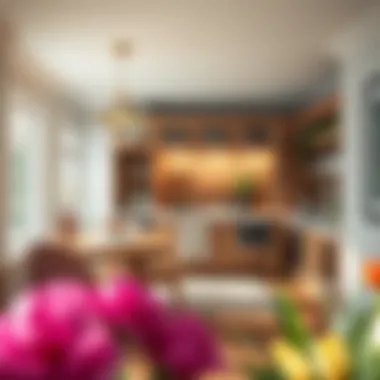
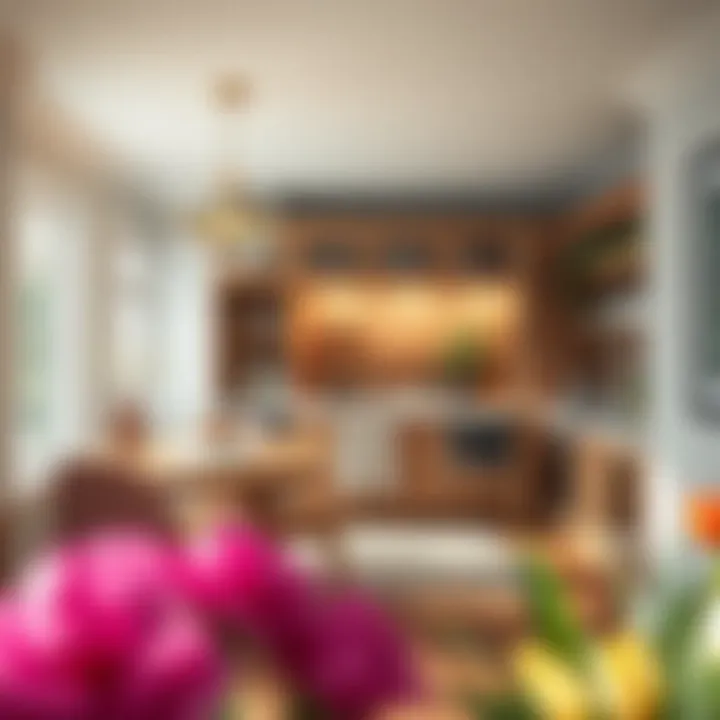
The charm of a hidden pantry in home design goes beyond utility; it weaves an intricate tapestry of elegance and cohesion. Homeowners today are smitten with the idea of a pantry that effortlessly melds into the living space, creating a refined aesthetic. The visual allure lies not only in the practicality but also in how it enhances the overall feel of the home. Hidden pantries have the unique ability to marry form and function, serving as both functional storage and design statement. Its contribution to home aesthetics is paramount, and here's why you should pay attention to every detail in their design.
Seamless Integration into Home Design
Creating a hidden pantry involves far more than merely carving out a space; it's about ensuring it harmonizes within the house's existing footprint. The harmony with surrounding spaces stands out as a crucial element for a pleasing aesthetic.
Harmony with Surrounding Spaces
A pantry that blends seamlessly into the home can transform the ambiance. It should complement the kitchen's color palette, material choices, and style; think of it as an extension rather than an afterthought. The key characteristic here is finding that synergy among elements. This approach is popular since a well-integrated pantry makes a space feel more organized and coherent. Homeowners often find that a pantry outfitted with similar cabinetry or finishes as the surrounding areas allows for a streamlined look that can make even the kitchen feel spacious.
However, the downside could be the lack of distinction; if everything looks too melded, the space might lose its playful character. Striking the right balance is essential to maintain both functionality and aesthetics.
Choosing Appropriate Materials
When it comes to choosing appropriate materials, the goal is clarity and cohesion. Selecting the right timber, tiles, and finishes enhances not just the pantry but the kitchen as a whole. One of the attributes of using similar materials across the pantry and kitchen is that it helps create a thought-out visual narrative in your design. Thus, invoking a feeling of continuity.
The materials should echo those in immediate spaces, tying everything together in a neutral palette, if desired, or even playing with contrasts for a bolder look. The unique feature about this approach is its flexibility; homeowners can opt for sustainable bamboo or go with more classic materials like oak, ensuring both style and environmental consideration. However, sometimes, a major concern arises around maintenance—darker colors may show dust or smudges more easily, while lighter tones may necessitate more frequent cleaning. Balance is again key.
Personalization and Custom Design
Hidden pantries hold the promise of personalization and custom design. The allure of such spaces comes from tailoring them to reflect one's personality and lifestyle.
Unique Layout Options
One of the defining factors is the unique layout options available to homeowners. These can range from walk-in features to cleverly disguised cabinets. Each layout can correspond with the available space and the homeowner’s preferences, thus playing to their needs effectively. The beauty of having custom layouts is that one can prioritize ease of access to frequently used items while also taking advantage of corner nooks that would otherwise be neglected.
However, designing a unique layout does have its challenges. If not done with consideration of space dynamics, it could easily lead to a pantry that feels cramped or inconvenient, countering its intended purpose. Nevertheless, those willing to put in the effort for thoughtful design will reap rewards in aesthetics and efficiency.
Decorative Features
The decorative features of a hidden pantry can also serve a dual purpose of aesthetics and functionality. Consider shelving options, decorative paneling, or even unique hardware. These elements can accentuate the pantry’s design while providing additional storage solutions. Such features can help to create a sense of delight, whether through vintage knobs or creative shelving designs that draw the eye.
However, one should be wary of over-decorating. Too many decorative elements can distract from the pantry’s functionality; it’s a fine line to tread. Properly executed, decorative features serve not only as conversation starters but also enhance the user experience.
In the quest for aesthetic appeal, hidden pantries stand as a beacon of versatility. They offer the opportunity to blend style with utility, catering to discerning homeowners and design enthusiasts who appreciate the balance of beauty and function. As the trend continues to gain traction, the exploration of aesthetics in design will keep evolving, inspiring fresh approaches.
Popular Hidden Pantry Designs
When considering the incorporation of a hidden pantry, homeowners often focus on design elements that not only fulfill functional requirements but also enhance the aesthetic appeal of the home. This section dives into distinctive pantry designs that cater to varying tastes and functional needs. From traditional layouts that echo classic architecture to modern interpretations brimming with sleek design, it’s evident that hidden pantries can be tailored to harmonize with a variety of home styles.
Traditional Hidden Pantry Designs
Traditional hidden pantry designs often feature rustic wooden shelving and classic cabinetry that mirror the charm of older constructions. This style blends seamlessly into a farmhouse kitchen or a vintage aesthetic. For instance, a classic layout might include a wooden door camouflaged within the cabinetry, which opens up to reveal a well-organized space complete with labeled jars and neatly stacked canned goods.
The benefits of having such a pantry are manifold:
- Cohesive Look: They maintain the kitchen's overall aesthetics while serving a significant function.
- Serializable Character: They resonate with those who cherish tradition, adding character and warmth to kitchens.
- Efficient Storage: Often deeper than modern designs, they allow for more extensive storage without sacrificing style.
Modern and Chic Approaches
Modern hidden pantry designs take a different route, prioritizing minimalism and clean lines. These designs often utilize sleek materials such as glass or metal combined with innovative storage solutions. A popular choice is a sliding door that simply opens with a push, revealing a curated space that may hold smart appliances or trendy ingredients from around the globe.
Incorporating such a pantry is beneficial because:
- Space Efficiency: With clever shelving and modular organization, they optimize space usage effectively.
- Contemporary Style: They appeal to homeowners who prefer an uncluttered, sophisticated look.
- Advanced Features: Many modern designs include features like LED lighting and integrated charging stations for kitchen gadgets.
Eco-Friendly and Sustainable Options
Amidst growing environmental concerns, eco-friendly hidden pantry designs have gained traction. These designs prioritize sustainability by using reclaimed materials, energy-efficient lighting, and even innovative composting systems. For example, a pantry made from reclaimed barn wood might not only be functional but also tell a story of sustainability and love for nature.
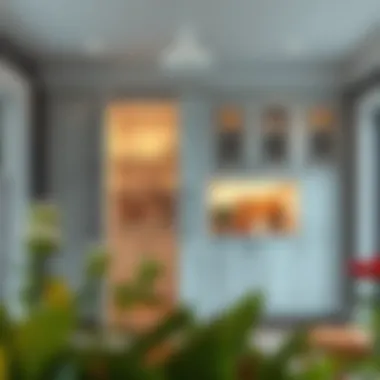
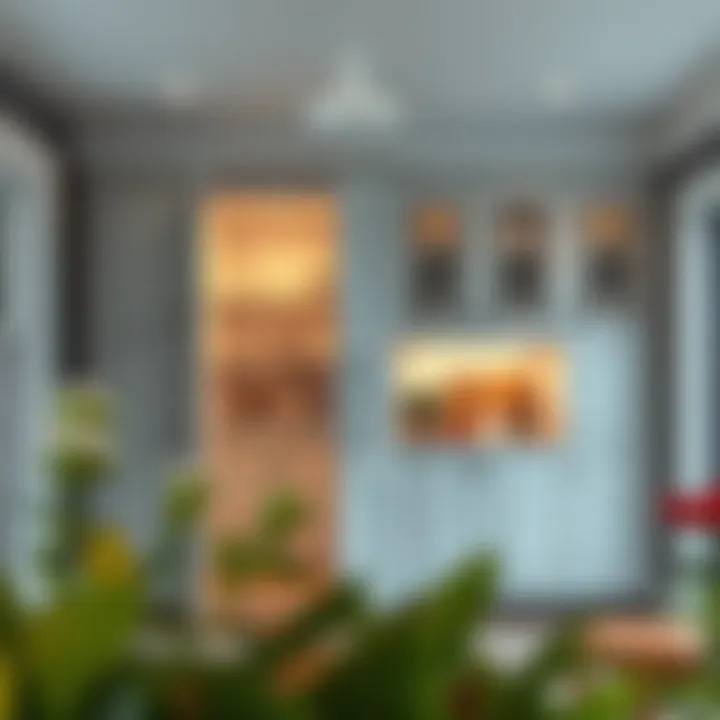
Considerations for these pantries include:
- Resource-Saving: Utilizing materials that are either recycled or sustainably sourced minimizes environmental impact.
- Future-Forward: Embracing technology that promotes energy efficiency aligns with current trends in green living.
- Natural Aesthetics: They often incorporate biophilic design principles, integrating plants into the pantry area for an additional touch of nature.
"Designing a pantry isn't just about storage; it's about creating an experience within your home that reflects your values and lifestyle."
Factors to Consider in Design
When embarking on the journey of designing a hidden pantry, there are several vital factors that one must contemplate. Each element you choose can influence functionality, convenience, and aesthetics, so taking the time to deliberate these considerations will yield a more satisfying result. In this section, we will discuss key components such as space measurements, location, ventilation, and light.
Space Measurements and Proportions
The dimensions of your hidden pantry directly influence its usability. For example, if the space is cramped, navigating through can become a hassle, diminishing its overall functionality. Ideally, a hidden pantry should be spacious enough to allow for easy access to your ingredients and supplies. It’s often said, "size matters," and in pantry design, this holds particularly true.
Considering height, width, and depth is crucial. You don’t want a pantry that’s too shallow, where items may just tumble out, nor too deep that lost items never see the light of day. Typically, a minimum depth of 24 inches is suggested to accommodate shelving and storage containers comfortably. If you aim for maximum efficiency, think vertical. High shelves can store rarely used items while keeping the more commonly accessed goods within arm's reach.
Location within the Home
Choosing the location of your hidden pantry is fundamental. It should correlate with your daily activities and should be convenient for your specific needs.
Proximity to Kitchen and Dining Areas
The closer your hidden pantry is to the kitchen, the easier it becomes to streamline meal prep. This characteristic can significantly reduce unnecessary foot traffic as you gather supplies. Picture this: you're cooking an elaborate dinner, and you have to run all the way to another room for ingredients. That extra effort eats up time and can lead to a whole lot of frustration.
Many homeowners opt for a location that allows for an adjoining pass-through to the kitchen. This not only enhances convenience but also maintains an organized feel in both the cooking and serving areas. One advantage of this arrangement is that it allows for better kitchen workflow, turning meal preparation into a smoother sailing experience.
"A kitchen without a functional pantry is like a ship without a sail."
Accessibility for Daily Use
Accessibility is another necessary factor. A hidden pantry meant to be used regularly should not be a puzzle to access. The best designs allow for easy reach while also being visually discreet when not in use. Homes that host visitors often find themselves valuing this aspect highly. Imagine guests wandering into your domain, and instead of seeing an expansive clutter of ingredients, they find a cleverly designed hidden space.
When a pantry is easily reachable, it encourages organization and regular use. It mustn't feel like a treasure hunt each time you need that elusive spice. Convenience wins here, allowing for a practical approach to those daily cooking tasks. Think of it as making life easier by putting necessities within steps, instead of chaos.
Ventilation and Light
Ventilation and light do not just enhance the aesthetics of your hidden pantry; they are essential for maintaining the quality of your stored goods. A pantry without proper airflow can invite humidity, turning fresh ingredients into mush before you can say "grocery list". Ambient light is also beneficial, as it allows you to see what you're working with during those wee hours of early meal-prepping.
Consider options like small windows, ceiling vents, or even pull-out shelving units with built-in lighting. These small features can elevate functionality and also contribute to a pleasant atmosphere within your hidden pantry, ensuring that not only do your items stay fresh, but you find cooking a joy rather than a chore.
To sum up, delving into these factors regarding measurements, location, accessibility, ventilation, and light will aid in creating a hidden pantry that’s not only practical but visually captivating. Careful consideration at this stage sets the stage for successful pantry design, leading to a harmonious blend of storage and style.
Incorporating Technology
In a world where technology shapes daily life, it's no surprise that it’s also influencing how we design and use spaces in our homes, including hidden pantries. Integrating the latest advancements not only enhances functionality but also streamlines user experience. The incorporation of smart technology into these hidden spaces can elevate them from mere storage areas to fully functional components of a modern kitchen.
Smart Storage Solutions
Automated Inventory Systems
Automated inventory systems are a noteworthy feature in the realm of smart storage solutions. These systems provide a way for homeowners to effectively keep track of pantry items without the hassle of manual checks. Say goodbye to the days of forgetting what’s stashed in the back; with an automated system, real-time inventory updates can alert you when stocks run low. The key characteristic here is convenience. Imagine receiving a notification when your flour supply dips below a certain threshold or, even better, when your favorite snacks run low.
One unique feature of automated inventory systems is the ability to link with online grocery stores. This makes it a breeze for users to reorder necessary goods with just a click. However, while the benefits are plentiful, there are also disadvantages, such as the dependency on stable Wi-Fi connections and the potential for data privacy concerns. These systems reflect the growing trend toward smart home solutions that aim to increase efficiency in daily life.
Remote Monitoring
Another technology worth noting is remote monitoring. This aspect allows homeowners to keep an eye on their hidden pantry from afar, making it a sought-after choice. With access via a smartphone app, users can adjust temperature settings or check humidity levels, ensuring that perishable items stay safe even when they're not at home. The convenience of remote control appeals to many homeowners aiming for peace of mind, especially for those who often travel or have busy lives.
A unique feature of remote monitoring systems is the integration of alerts. These can inform homeowners of temperature deviations or potential problems before they escalate. The downsides? The initial cost of installation can be a hurdle for some, and like many tech items, it requires regular updates and maintenance to function optimally.
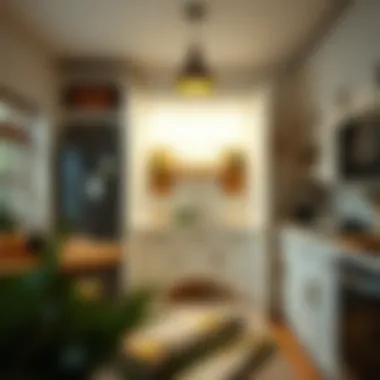
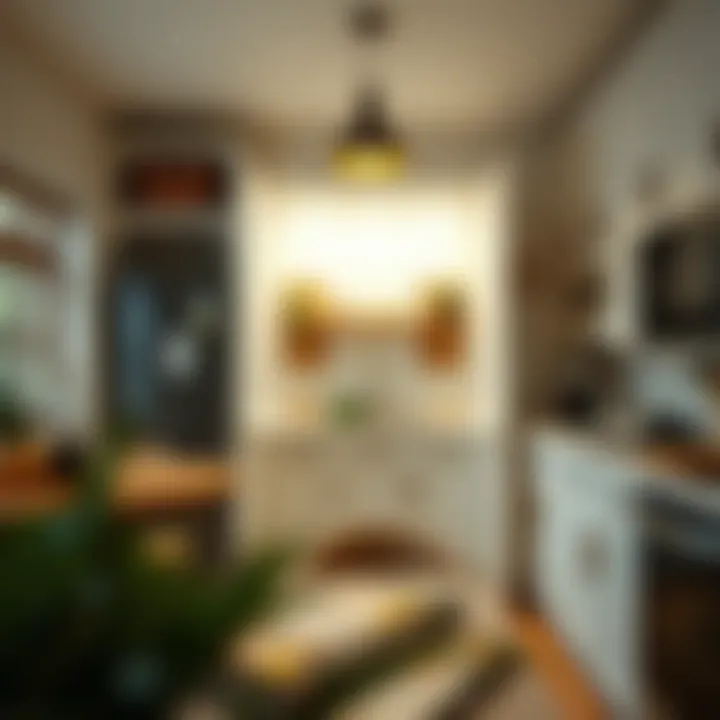
Energy Efficiency in Pantry Design
As we continue to find ways to green our homes, energy-efficient design remains essential. Hidden pantries can be designed with energy savings in mind, incorporating elements like proper insulation and energy-efficient lighting. Such considerations reduce energy consumption and promote eco-friendliness, which is not just good for the wallet but also for the planet.
A well-designed hidden pantry can easily become a model of energy efficiency – think leadership in nurturing both your home environment and the earth.
In summary, the technology incorporated into hidden pantries offers revolutionary advantages. From automated inventory systems facilitating stock management to remote monitoring keeping tabs on environmental conditions, technology transforms the pantry from just a storage room into a cornerstone of modern home management. With energy efficiency further enhancing these designs, the future of hidden pantries looks promising.
Tips for Building a Hidden Pantry
Building a hidden pantry can be an exciting endeavor that greatly enhances your home’s functionality and aesthetic. It’s more than just a place to store food and supplies; it’s a creative solution to maintain organized spaces while keeping the kitchen neat. By utilizing clever design strategies and considering the specific needs of your household, you can craft a hidden pantry that serves various purposes seamlessly. Here are key aspects to consider:
Budgeting for Your Project
From the jump, understanding your budget is paramount. Hidden pantries can vary widely in cost, mainly based on materials, size, and complexity of the design. Here are some practical steps to help you stay on track while planning your finances:
- Assess Your Priorities: Is it more important to use high-quality materials, or can you make compromises? Detailing what matters most will help you allocate funds efficiently.
- Get Estimates: Reach out to local contractors to gather rough estimates for your pantry's construction. This will give you a solid baseline and help you identify a realistic budget range.
- Plan for Overages: It’s wise to factor in an additional 10-20% for unexpected costs. Things rarely go perfectly in construction, so being financially prepared is a good call.
- DIY Possibilities: If you're handy, consider whether you can tackle some elements yourself to cut costs. This could include shelving, painting, or even basic carpentry.
"Planning a budget for your hidden pantry not only keeps your project organized but also ensures you don't find yourself in hot water when unexpected expenses pop up."
Selecting the Right Contractors
Once your finances are in order, the next essential step is choosing the right contractors. Not all builders have the same experience with specialized projects, like hidden pantries, so look for one who understands your vision:
- Check Reviews and References: Look online for reviews on platforms such as Yelp or Google. Reach out to past clients to hear about their experiences. A contractor with strong references can help ease concerns, ensuring you make a sound choice.
- Interview Potential Contractors: Take the time to discuss your ideas with prospective builders. Gauge their understanding of hidden pantry design and their communication style. Are they willing to listen to your ideas?
- Assess Portfolio: Asking for a portfolio helps you see if their work aligns with your vision. Look for creative, functional designs they’ve previously completed.
- Get Detailed Quotes: While cost is important, it shouldn’t be the only factor. Obtain detailed proposals that outline what you can expect, covering timelines, materials used, and payment structures.
In the winding path to create a hidden pantry, careful attention to budgeting and contractor selection can ensure that the project doesn’t just meet, but far exceeds your expectations. With these strategic steps, you're better poised to build a pantry that elegantly merges practicality with style.
Real-Life Applications
In discussing hidden pantries, it is essential to delve into their real-life applications. These cleverly concealed spaces not only serve a practical purpose but also enhance the overall functionality of the home. As many homeowners seek innovative solutions to manage their space effectively, the allure of hidden pantries grows increasingly relevant. By examining real-world applications, we can appreciate how these spaces transform kitchens and storage areas, improving both organization and aesthetic appeal.
Case Studies of Successful Hidden Pantries
Looking at actual examples brings to light the myriad possibilities hidden pantries present. One example is a quaint cottage nestled on a hillside where space is limited. Here, the homeowner designed a hidden pantry in a narrow closet, employing sliding barn doors that blend seamlessly with the living area. With careful planning, they optimized space without compromising on aesthetics. This pantry holds preserved goods and daily essentials, making them easily accessible yet discreet. The key takeaway from this case is how even a small footprint can yield significant benefits when utilizing smart design.
Another notable case involves a mid-century modern home conversion. The homeowner integrated a hidden pantry behind a custom-built bookcase in the dining area. This design choice allows the pantry to effortlessly correlate with the style of the home while providing ample storage for kitchen supplies and seldom-used items. Utilizing the hidden pantry this way not only maximizes storage but creates an air of surprise, delighting guests who discover the cleverly concealed space. Such case studies highlight practical implementations of hidden pantries, proving their versatility across varying home styles.
Testimonials from Homeowners
Homeowners often share transformative experiences following the addition of hidden pantries. For instance, a family in suburban Chicago expressed their satisfaction with the increase in kitchen efficiency. They noted, "Having a hidden pantry really decluttered our space. Now, everything is at arm's reach, but the chaos isn't on display, which makes cooking feel more enjoyable."
Another homeowner from a bustling urban area mentioned, "We had limited space in our kitchen, and the hidden pantry has been a game-changer. Not only can we store items away from sight, but it also keeps our kitchen looking tidy. Less clutter means less stress."
These testimonials underscore the substantial impact that proper pantry design can have on the home environment, reflecting a balance between functionality and style. The joy and relief homeowners experience speak volumes about the benefits of integrating hidden pantries into their living space.
Finale and Future Trends
As homeowners increasingly prioritize functionality without compromising aesthetics, hidden pantries have surged in popularity, carving out a permanent niche in modern design conversations. While they offer a host of benefits, such as enhancing kitchen efficiency and providing a clutter-free environment, it is essential to consider their evolving design possibilities. Future trends will likely see hidden pantries that reflect personal tastes and sustainability goals, setting the stage for dynamic spaces built to transform residential experiences.
Sustaining Popularity of Hidden Pantries
The sustained interest in hidden pantries can be traced back to several key factors:
- Space Efficiency: In today’s world, where square footage often comes at a premium, utilizing every nook and cranny is essential. Hidden pantries offer a solution that combines storage without taking up additional real estate in the kitchen. A cleverly concealed pantry can optimize even the smallest of kitchens, allowing homeowners to make the most of their space.
- Trendy Aesthetic: The sleek and modern appearance of hidden pantries adds another layer of sophistication to interior design. As kitchens increasingly become the heart of the home, incorporating these pantries makes a design statement while maintaining functionality.
- Customization: Many homeowners are looking for unique touches in their living spaces that reflect their personalities. Hidden pantries allow for creativity in design—every surface and opening can be aligned with individual styles. Homeowners can play with everything from texture and color to the materials used, which keeps the trend alive and well.
"Hidden pantries bring not just utility but a quality of life improvement, merging style with practicality."
Innovative Ideas for the Future
As we look ahead, several innovative concepts stand to enhance the functionality and appeal of hidden pantries further:
- Integrated Smart Technology: With the rise of smart home integration, future hidden pantries may incorporate technology that makes organizing a breeze. Automated inventory systems could keep track of food supplies, while remote monitoring might allow for alerts when stocks run low. Homeowners could receive notifications about expiration dates, helping them reduce food waste.
- Modular Designs: The trend towards modular design continues, and hidden pantries are no exception. Homeowners may customize their pantry spaces with movable shelving or compartments, allowing them to adapt as their storage needs change. This flexibility would ensure that their hidden pantries can evolve alongside their culinary endeavors.
- Sustainable Features: Eco-friendliness is paramount for future designs. Pantries constructed from sustainable materials or equipped with energy-efficient features will likely become a staple. Harvesting rainwater for cleaning or utilizing solar panels for pantry lighting can add an environmentally friendly spin to these spaces.
By recognizing the importance of both aesthetics and functionality, homeowners continue to inspire greater creativity in pantry designs. As trends shift, discussing useful features and innovative ideas allows for intriguing possibilities, ensuring that hidden pantries remain relevant in modern home architecture.



